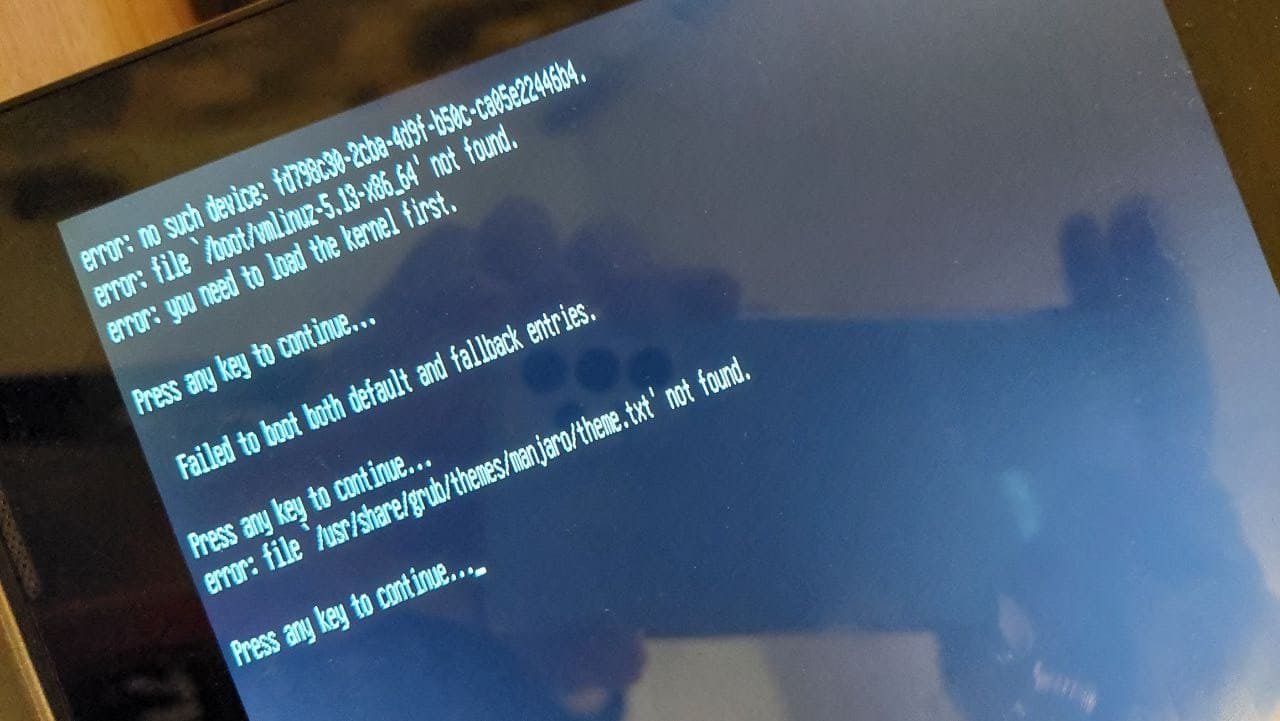

- #Install bootloader on usb zero fat sectors install#
- #Install bootloader on usb zero fat sectors iso#
- #Install bootloader on usb zero fat sectors windows#
#Install bootloader on usb zero fat sectors iso#
r-xr-xr-x 1 root root 8236 Apr 27 21:23 ldlinux.sysĮither mount the LiveCD/DVD directly or just mount the ISO image of the LiveCD/DVD: Since your have already installed syslinux on the USB memory stick before, you should see Under Scientific Linux /dev/sdb1 will be mountable under /media/"something".
#Install bootloader on usb zero fat sectors windows#
If you get "boot failed", "Missing operation system", "Boot error" or just nothing, try to redo the above steps -Īlso try to format the stick under Windows as described above.įirst mount the partition.

Peter AnvinĬongratulation, you USB stick is no bootable! If this works you should see someting like: Now try to boot from the USB memory stick. This should create a file "ldlinux.sys" in the sdb1 partition. You will find the syslinux binary in the folder unix: Download, unpack and compile syslinux by executing "make". I have successfully used syslinux > 3.11. If you get the error "Cluster sizes larger than 16K not supported", try to use a more recent version of syslinux. Now the syslinux boot loader has to be installed on the first FAT partition: Important: The first partition is active (marked with *) and is a FAT16 partition: ID "e". Make the USB memory stick bootable using syslinuxģ1 heads, 62 sectors/track, 1022 cylinders Note, this is all done without mounting the partition. If you like, you can set a label with option -n Now format the first partition (/dev/sdb1) as FAT16.
#Install bootloader on usb zero fat sectors install#
The size of the partition should be at least as larger as the LiveCD/DVD you want to install on the USB device.Īfterwards, change the type (enter t) of first partition (enter 1) to W95 FAT16 LBA (enter e),Īnd make first partition active (enter a and select 1).īefore writing the partition table to the USB flash drive (enter w), you can print the changed settings (enter p). Then create a FAT16 partition on the USB flash drive:Ĭreate a new partition (enter n): Choose Primary partition (enter p), Partition number (enter 1).

Windows 95B/98/98SE/ME master boot record successfully written to /dev/sdb Ms-sys is available on recent SL LiveCD/DVDs or you can take the rpm for el4 from # dd if=/dev/sdb of=/tmp/mbr_sdb.bin bs=512 count=1Ĭreate a Windows 95/98 MBR on USB memory stick, using ms-sys ).įor example to write the MBR of the first SATA disk (/dev/sdb) to a file mbr_sdb.bin, run: If you are unsure, please back up your MBR(s) to a file and copy this file to a safe place The USB device should also be visible by the commandįirst you have to overwrite the master boot record (MBR) of your USB flash drive.Ĭaution: Overwriting the wrong MBR (for example the one of your hard disk) can leave to complete data loss! If you have only IDE disks, it will be most probably appear on /dev/sda otherwise it can be on /dev/sdb or higher. On LinuxĬheck on which device (dev/sd?) your USB memory stick is recognized by the system. I have to admit that I had more success using the HP tool than doing it under Linux. Unfortunately it runs only under Windows.ĭownload the HP USB Disk Storage Format ToolĬhoose as file system FAT (not FAT32) and format the stick. There is a useful tool from HP which allows you to format your USB memory stick. Whether it works or not can depend on the MBR and on the partition of your stick, on the USB memory stick itself and on the BIOS of your PC. To boot from USB memory is not a trivial task. The following description assumes that the usb stick is on /dev/sdb. Please make sure that you know which device corresponds to your USB memory stick (e.g. You can destroy your system, which can leave to complete data loss! WARNING: If you change the wrong MBR or if you format the wrong partition,

If you don't have a running Linux system, you can do the whole procedure Please note, you must be root to execute most of the following commands. A similar setup can also be done with grub as bootloader. In order to boot from a USB drive your BIOS has to support booting from an USB deviceĪnd you need to install a bootloader like grub or syslinux on it.Īs bootloader and assumes that the USB memory stick IMPORTANT: This description is valid for SL4 and SL5 only. SL4 and SL5: Live System on USB flash drive


 0 kommentar(er)
0 kommentar(er)
